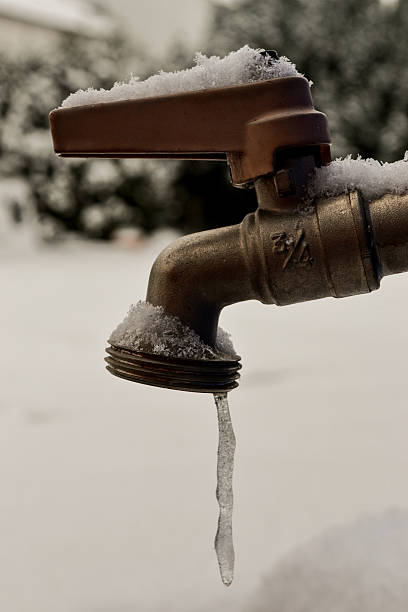Avoiding Your Pipes from Freezing: Effective Tips
Avoiding Your Pipes from Freezing: Effective Tips
Blog Article
We've noticed this article pertaining to How To Avoid Freezing Pipes directly below on the net and thought it made perfect sense to quickly share it with you on this site.
:strip_icc()/snow-outdoor-faucet-pipes-4af65d1e5e904fb1aa7bf74071fe5d89.jpg)
Winter can damage your plumbing, particularly by freezing pipes. Right here's just how to avoid it from happening and what to do if it does.
Introduction
As temperature levels decline, the threat of icy pipelines increases, possibly leading to costly repair work and water damage. Understanding just how to avoid icy pipelines is crucial for house owners in cold climates.
Recognizing Icy Pipes
What causes pipes to ice up?
Pipelines ice up when exposed to temperatures below 32 ° F (0 ° C) for extended durations. As water inside the pipes freezes, it expands, taxing the pipe walls and possibly triggering them to burst.
Dangers and damages
Icy pipes can lead to water system disturbances, property damages, and costly repairs. Ruptured pipes can flood homes and cause considerable structural damages.
Indications of Frozen Pipeline
Identifying frozen pipes early can prevent them from breaking.
Just how to identify frozen pipes
Seek decreased water flow from taps, uncommon smells or noises from pipelines, and noticeable frost on subjected pipes.
Prevention Tips
Protecting prone pipelines
Cover pipelines in insulation sleeves or utilize warm tape to protect them from freezing temperature levels. Concentrate on pipes in unheated or external areas of the home.
Home heating methods
Keep indoor spaces adequately heated up, particularly locations with pipes. Open cabinet doors to allow cozy air to circulate around pipelines under sinks.
Securing Outside Pipes
Garden hose pipes and outdoor taps
Disconnect and drain yard tubes before winter. Set up frost-proof spigots or cover exterior taps with protected caps.
What to Do If Your Pipes Freeze
Immediate actions to take
If you believe frozen pipelines, keep taps open to ease stress as the ice thaws. Make use of a hairdryer or towels taken in warm water to thaw pipelines gradually.
Long-Term Solutions
Architectural changes
Take into consideration rerouting pipes away from outside wall surfaces or unheated locations. Add added insulation to attics, cellars, and crawl spaces.
Updating insulation
Purchase premium insulation for pipelines, attic rooms, and walls. Correct insulation assists preserve consistent temperature levels and decreases the threat of icy pipelines.
Final thought
Stopping frozen pipes needs positive steps and fast responses. By understanding the reasons, indicators, and preventive measures, home owners can protect their plumbing during cold weather.
5 Ways to Prevent Frozen Pipes
Drain Outdoor Faucets and Disconnect Hoses
First, close the shut-off valve that controls the flow of water in the pipe to your outdoor faucet. Then, head outside to disconnect and drain your hose and open the outdoor faucet to allow the water to completely drain out of the line. Turn off the faucet when done. Finally, head back to the shut-off valve and drain the remaining water inside the pipe into a bucket or container. Additionally, if you have a home irrigation system, you should consider hiring an expert to clear the system of water each year.
Insulate Pipes
One of the best and most cost-effective methods for preventing frozen water pipes is to wrap your pipes with insulation. This is especially important for areas in your home that aren’t exposed to heat, such as an attic. We suggest using foam sleeves, which can typically be found at your local hardware store.
Keep Heat Running at 65
Your pipes are located inside your walls, and the temperature there is much colder than the rest of the house. To prevent your pipes from freezing, The Insurance Information Institute suggests that you keep your home heated to at least 65 degrees, even when traveling. You may want to invest in smart devices that can keep an eye on the temperature in your home while you’re away.
Leave Water Dripping
Moving water — even a small trickle — can prevent ice from forming inside your pipes. When freezing temps are imminent, start a drip of water from all faucets that serve exposed pipes. Leaving a few faucets running will also help relieve pressure inside the pipes and help prevent a rupture if the water inside freezes.
Open Cupboard Doors
Warm your kitchen and bathroom pipes by opening cupboards and vanities. You should also leave your interior doors ajar to help warm air circulate evenly throughout your home.

As a serious reader about Preventing and dealing with frozen pipes, I think sharing that excerpt was really useful. Enjoyed reading our entry? Please share it. Let others find it. Thank-you for your time spent reading it.
Request Free Estimate Report this page